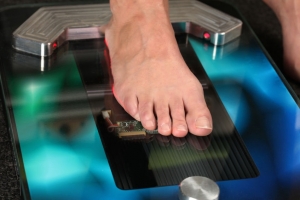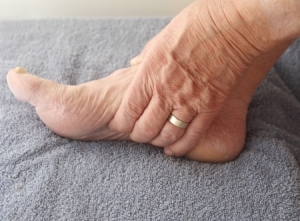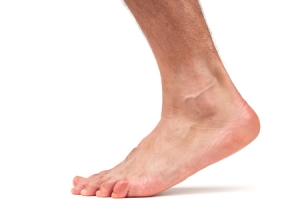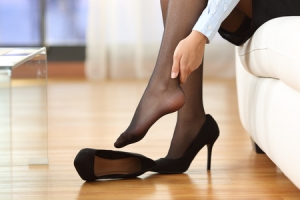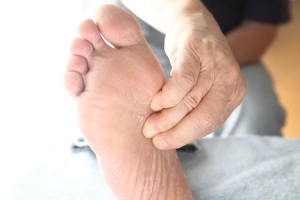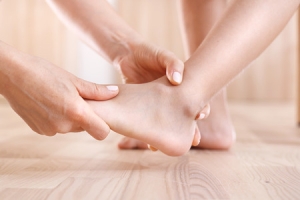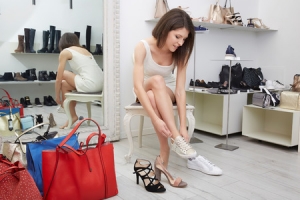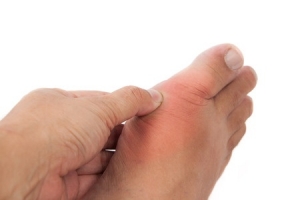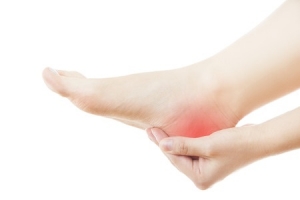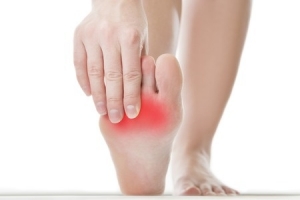Connect With Us
Blog
Displaying items by tag: Orthotics
FAQ’s about Custom Orthotics
At Superior Foot & Ankle Care Center we often get questions from our Los Angeles County patients about custom orthotics. Below are some of the most frequently asked questions about this very effective, non-invasive type of podiatric treatment.
Q: What conditions can orthotics help treat?
A: Orthotics are footwear inserts that are used to provide support and reduce pain, discomfort, pressure or imbalance, and other symptoms caused by a wide range of foot and ankle deformities, injuries, and diseases as well as biomechanical problems. Some common conditions that can be treated with orthotics include flat feet, heel pain, arthritis, bunions, calluses, corns, big toe pain, and neuropathic ulcerations.
Q: What’s the difference between over-the-counter shoe inserts and custom orthotics?
A: Over-the-counter inserts can provide some arch support and treat minor discomfort and pain. Prescription orthotics, however, are made from a mold of your unique foot and therefore better able to address and correct your specific foot issues. Prescription orthotics are also constructed of more durable materials and can last a long time.
Q: What are some common kinds of prescription orthotics?
A: Orthotics come in many shapes and sizes and are made from a variety of materials depending on individual needs. They may take the form of insoles, arch supports, heel pads, or foot cushions. Generally, there are two classifications of orthotics. Accommodative orthotics offer cushioning and reduce pressure on a vulnerable area of the foot. Functional orthotics are used to treat foot problems caused by foot and ankle motion and alignment.
Q: How are custom orthotics made?
A: The first step is to have our podiatrists, Dr. Victoria M. Foley and Dr. Constance Ornelas, conduct a thorough examination of your feet and ankles and evaluate how they are impacting your knees, legs, and lower back. Once the foot doctor has a diagnosis of your podiatric disorder and a complete understanding of the biomechanics of your foot, a mold of your foot will be made from a plaster cast or a specialized computer scan that maps your foot structure and your gait. The podiatrist will then check to make sure the orthotic is fitted properly and monitor your progress.
If you would like to learn more about orthotics and whether or not they can help you, contact our Long Beach office at (562) 420-9800 office for an appointment today.
Recognizing and Treating Rheumatoid Arthritis
As we age, many of us just accept joint stiffness and pain as an unavoidable part of getting older. But, at Superior Foot & Ankle Care Center, we want to encourage patients to bring those symptoms to our Long Beach office as soon as they start to notice them. Arthritis can be treated, and its progression can be slowed. It’s also important to have our podiatrists, Dr. Victoria M. Foley or Dr. Constance Ornelas examine your feet and properly diagnose your condition because there are multiple kinds of arthritis and they require different treatments.
Signs of Rheumatoid Arthritis
Arthritis is actually a category that contains over 100 different conditions. The two major forms of arthritis, however, are osteoarthritis (the “wear and tear” kind) and rheumatoid arthritis. Rheumatoid arthritis is the most serious of the two. It is actually an autoimmune disorder that causes the body’s immune system to attack its own cells. This leads to an intense inflammatory response within the body. Symptoms may include:
- Joint pain
- Stiffness
- Redness and warmth at the joints
- Swelling
These are also common signs of osteoarthritis. Patients with rheumatoid arthritis may notice additional symptoms, including:
- Fever
- Fatigue
- Symmetry of symptoms—meaning that what is going on in one side of the body is also going on in the other side, i.e., joint pain will occur in both hands or both feet
- Weight loss
- Nerve damage that results in numbness or tingling
- Decreased range of motion
Because rheumatoid arthritis is a systemic condition that can also affect other symptoms in the body, a patient with this disease will need a rheumatologist or other physician to coordinate and mange their care.
Podiatric Help
The foot doctor is part of the care team for a patient with rheumatoid arthritis will help with treatment designed to relieve foot pain caused by the arthritis. Some options may include:
- Steroid injections
- Accommodative shoes
- Orthotics
If you have begun to experience joint discomfort, soreness or pain, it’s important that you make an appointment as soon as possible. Contact us by calling: (562) 420-9800.
Fixing Flat Feet
At Superior Foot & Ankle Care Center we treat many patients with flat feet. This common condition can be a source of ongoing pain and also cause swelling and a lack of flexibility in the foot. Oftentimes, people with flat feet also suffer from heel pain due to the biomechanical dysfunction that alters the structure and motion of the foot.
In some people, flattening of the arch begins during adolescence and continues into adulthood. For others, it is caused by Posterior Tibial Tendon Dysfunction or PTTD—a condition that has to do with changes in this tendon that provides major support for the arch of your foot. Other contributing factors to flat feet include:
- Genetics
- Weight gain
- Injury or trauma
- Aging
- Arthritis
Getting Relief
Our podiatrists, Dr. Victoria M. Foley or Dr. Constance Ornelas will want to examine your feet and determine the source of the your deformity. If your fallen arches are not causing you pain, the foot doctor may just take a wait and see approach and monitor your condition. Flat feet is usually a progressive disorder and therefore is best treated sooner rather than later. Regardless of the cause, however, there are several non-invasive treatment options available. These include:
- Icing the painful area
- Anti-inflammatory medications
- Physical therapy
- Arch supports, braces or supportive tape
- Custom orthotics
- Rest
- Choosing more supportive shoes
When these measures fail to bring relief or the arch continues to fall, surgery may become necessary. We offer flat foot reconstruction surgery that can provide a long-term correction of your fallen arches. If you are suffering with painful flat feet, contact our Long Beach office as soon as possible by calling: (562) 420-9800. The podiatrist will discuss the best surgical option for your specific case of flat feet and let you know what you can expect as far as results and recovery time.
Facts about Haglund’s Deformity
Are you familiar with the condition known as Haglund’s Deformity? At Superior Foot & Ankle Care Center we find that patients have some misconceptions about this disorder which affects the heel. Below are some facts to better familiarize you with this foot problem:
FACT: Haglund’s Deformity is a bony enlargement that develops on the back of your heel. Other signs of this condition are swelling and redness around the enlargement and pain where the Achilles tendon attaches to your heel bone.
FACT: Another name for Haglund’s Deformity is “pump bump.” That’s because pumps with their stiff backs hit the bony enlargement and irritate it, resulting in pain when walking and wearing shoes.
FACT: More women than men get Haglund’s Deformity.
FACT: Although pumps aggravate the bony enlargement, they are not the cause of Haglund’s Deformity. This condition is the result of structural defects, including overly high arches, the tendency to walk on the outside of your heel or a tight Achilles tendon.
FACT: Haglund’s Deformity can only be corrected by surgery. There are, however, a number of conservative measures that can be used to relieve pain and decrease pressure on the bony protrusion. After our podiatrists, Dr. Victoria Foley and Dr. Constance Omelas, examine your heel and order x-rays or other imaging studies to confirm a diagnosis of Haglund’s Deformity a treatment plan can be determined.
FACT: Treatment for pump bump will depend in part on the cause. Heel pads, for example, may be recommended if the cause is high arches or stretching exercises for your calf if the source of the condition is a tight Achilles tendon. Custom orthotics can also be used to correct abnormal foot motion.
FACT: Pain from pump bump can be reduced by icing the bony enlargement. Apply an ice pack wrapped in a thin towel (do not apply ice directly to the skin) for 20 minutes at a time with a 40-minute break in between.
FACT: You can help prevent inflammation of the bony growth by wearing shoes with open backs or those made of soft materials. You should also avoid running on hard surfaces and up hills.
If you have additional concerns about Haglund’s Deformity, contact our Long Beach office by calling: (562) 420-9800.
Could You Have Metatarsalgia?
Are you experiencing acute pain in the ball of your foot? Is the pain more noticeable with increased activity or when you are walking barefoot? Have you noticed a callus beginning to form in the spot where the pain is? If you answered yes to one or more of these questions, you may be suffering from a condition we treat at Superior Foot & Ankle Care Center known as metatarsalgia.
Your metatarsal bones run down the middle of your foot from your ankle to each of your 5 toes. When the nerves between two of the metatarsals become inflamed, it causes pain, and this is known as metatarsalgia.
What’s Behind the Pain
Basically, metatarsalgia occurs when there is either too much pressure or an uneven pressure applied to the metatarsals. This can have a wide range of causes, however, including:
- Overpronation
- Arthritis
- Foot injuries
- Aging
- Weight gain
- Overuse from weight-bearing sports such as running
- Foot deformities
- Morton’s neuroma
- Poorly fitting footwear
- Standing for long periods on hard surfaces
Getting Relief
The treatment for metatarsalgia will depend on the cause. The first step is to have our podiatrists, Dr. Victoria Foley and Dr. Constance Omelas examine your feet. The foot doctor will also want to get your medical history and ask about your recent activities. Once the reason behind the metatarsalgia has been found, the foot doctor may recommend one or more of the following:
- Icing the area and taking over-the-counter anti-inflammatory medications to relieve pain and inflammation
- Resting your feet from sports and physical activities that aggravate the ball of the foot
- Custom orthotics to correct overpronation or other biomechanical issues
- Wearing properly fitting, supportive shoes
- Losing weight if you are overweight to reduce pressure on your feet
If you are experiencing pain or pressure in the ball of your foot, contact our Long Beach office today for an appointment by calling: (562) 420-9800.
Common Cause of Heel Pain in Children
At Superior Foot & Ankle Care Center we know that tracking down the source of foot pain in children can be challenging. A condition that often affects children between the ages of 8 and 14 is Sever’s Disease, also known as calcaneal apophysitis. Until your child passes through puberty, his or her legs and feet continue to grow and develop. Sometimes the heel bone can grow faster than the tendons and muscles of the leg. This can result in a feeling of tightness and pressure in the heel. The back of the growth plate has a vulnerable spot where new bone growth forms. Continuous stress on the heel caused by running, jumping and wearing cleats can inflame the growth plate. High-risk sports include soccer, football, track, basketball and gymnastics.
Signs and Symptoms
Pain in the bottom of the heel, a loss of flexibility, or a feeling of tiredness in the foot are the primary symptoms of Sever’s Disease. There also may be some swelling in the affected area. Young children, however, may not be able to articulate their symptoms. Look for these signs that heel or other foot pain may be occurring:
- Limping
- Walking on tip toes
- Claiming to be tired and not wanting to play
- Avoiding sports and other physical activities that your child usually enjoys
Getting Relief
Our podiatrists, Dr. Victoria Foley and Dr. Constance Omelas will develop a treatment plan to help relieve pain and inflammation. This will most likely include resting the heel and avoiding sports and activities that aggravate it as well as any of the following:
- Icing the heel
- Anti-inflammatory medications
- Heel cushion inserts or orthotics
- Exercises to stretch and strengthen lower leg muscles and tendons
Sever’s Disease does not have any long-term effects as long as your child takes a break from activities that are putting a strain on the heel and allows the inflammation to go away. It’s important, however, not to ignore signs of foot pain in young athlete’s or encourage them to “play through the pain,” as damaging injuries can then occur.
If you have questions about your child’s foot health, contact our Long Beach office today by calling: (562) 420-9800.
3 Foot Care Tips for Getting in Shape
If you are like many of our patients at Superior Foot & Ankle Care Center the New Year is a time to renew your commitment to getting physically fit. This is a worthy resolution that will benefit your feet and your entire body. Improved circulation, maintaining a healthy weight, decreased risk of heart disease and high blood pressure and stress relief are among the many benefits of regular exercise. Before you get started, however, we’d like to make the following suggestions to protect your feet and increase the enjoyment of your fitness program.
Get a Checkup—it’s a good idea to meet with our podiatrists, Dr. Victoria Foley and Dr. Constance Omelas and discuss your fitness goals and how you hope to achieve them. Some exercises put more stress on your feet than others. It’s important to have a complete examination of your feet and ankles and to have the foot doctor address any ongoing problems that you may be having. Sometimes special orthotics or padding may be recommended to protect a vulnerable area and make exercise more comfortable. The foot doctor can also make specific recommendations regarding shoes that suit your gait and foot.
Shop for Shoes—if you are going to be trying out a new activity go to a professional sports shoe store to get the correct footwear for your sport. Sports shoes are designed specifically for the types of movement required for specific activities. You should have your foot measured and also let the shoe salesperson know about any foot issues you have. You can avoid blisters by wearing shoes that are the correct size and don’t rub anywhere on your foot. Be sure to pick up some absorbent socks as well. Keeping feet dry is essential to avoid athlete’s foot and other fungal infections from developing.
Don’t Skip the Conditioning—properly warming up and stretching the ligaments, tendons and muscles in your lower legs and feet before and after exercise can help you avoid common injuries such as shin splints, Achilles tendonitis and plantar fasciitis.
If after you begin an exercise routine you notice pain in your toes, feet, ankles, calves or shins, be sure to make an appointment at our Long Beach office by calling: 562-420-9800. Continuing to work out while you are in pain will cause way more harm than good.
All About Sesamoiditis
Chances are if you haven’t had sesamoiditis, you may not have any idea what it is. However, at Superior Foot & Ankle Center we often find that for patients suffering from pain in the ball of the foot, sesamoiditis is the cause.
What are Sesamoids?
Sesamoids are a unique structure in the body. They are tiny bones that are embedded in a tendon and are not connected to other bones. They are only found a few places in the body and your feet are one of them. Two sesamoids are located on the bottom of your foot at the base of the big toe. They act kind of like pulleys in the tendon, enabling it to move more easily and helping the big toe with pushing off.
Too Much Pressure
Due to their location and function in the foot sesamoids are exposed to excessive amounts of pressure and force. They can become over stressed or even injured from activities such as running and other sports, dancing, jobs that require you to be on your feet all day and having high arches or wearing high heels frequently. When the sesamoids become inflamed and irritated that is the condition of sesamoiditis.
Diagnosis and Treatment
In addition to pain in the ball of the foot, patients with sesamoiditis may also experience pain at the base of the big toe as well as swelling and bruising in that area. The big toe may be stiff and difficult to bend. Our podiatrists, Dr. Victoria Foley and Dr. Constance Omelas, will want to examine your foot, paying particular attention to the big toe. Digital x-rays (which can be done right in our Long Beach office) and other imaging studies may be needed to confirm the diagnosis.
There are a number of treatment options available for sesamoiditis, depending on the extent of the condition, including:
- Over the counter anti-inflammatory medications or steroid injections to help reduce pain, swelling and inflammation
- Bracing, taping or strapping the toe to relieve pressure and allow healing
- Wearing soft-soled, low-heeled, cushioned footwear.
- Orthotics
- Physical therapy
If you are experiencing symptoms of sesamoiditis, stop any activities that cause pain and contact us for an appointment by calling: (562) 420-9800.
Keeping “Pump Bump” Under Control
Pump Bump is the common name for Haglund’s Deformity. Many patients that we at Superior Foot & Ankle Care Center see with this condition mistakenly believe that it is caused by their shoes. In reality, the bony protrusion at the back of the heel is the result of faulty foot structure which is often inherited. Other conditions that can lead to pump bump include:
- Underpronation (walking on the outside edge of your foot)
- High arches
- Tight Achilles tendon
Reducing Pain and Irritation
Our podiatrists, Dr. Victoria Foley and Dr. Constance Omelas, will need to examine your foot to confirm a diagnosis of Pump Bump. The foot doctor will likely order x-rays of the back of the heel as well to evaluate the bone structure and rule out other conditions that might cause pain and irritation in that part of the foot.
Shoes with stiff backs that repeatedly rub against the bump make it red and painful. Pumps consistently hit the spot where the deformity is located and hence the name, Pump Bump. Other shoes are problematic also, including high topped work boots, ice skates and certain men’s dress shoes. If you have Haglund’s Deformity you obviously have to be selective about your footwear. A callus or open sore can form if you continue to wear shoes that put pressure on this spot.
There are several other ways to relieve the pain and decrease the friction on the bony enlargement, depending on what else is putting stress on the back of the heel. The foot doctor may recommend heel lifts to help compensate for high arches, stretching exercises if you have a tight Achilles tendon, or custom orthotics to help control the motion of the foot. Padding, immobilization and medication are other avenues of treatment. If you continue to be in severe pain despite these noninvasive measures, surgery may be required.
The bottom line is if you have Pump Bump you don’t need to continue to suffer. Make an appointment at our Long Beach office by calling 562-420-9800 and find out what can be done to relieve your painful symptoms.
Excess Pressure Can Be a Pain in the Foot
Our feet are pretty forgiving. They take us where we need to go and help us stay fit by enabling us to participate in sports and exercise activities. They even accept being crammed into uncomfortable shoes now and then for the sake of fashion. However, we can push it too far. When an excessive amount of pressure is put on our feet we are susceptible to many foot disorders. One of them is metatarsalgia. This condition’s telltale sign is pain in the ball of the foot where the five long metatarsal bones end. At Superior Foot & Ankle Care Center we find that there are many ways that patients put too much pressure or uneven pressure on this part of the foot, including:
- Standing or walking for long periods of time on very hard floors or ground
- Frequently participating in weight-bearing activities such as running, dancing or basketball
- Wearing shoes that fit improperly or spending too much time in shoes with very rigid soles such as work boots or hiking shoes
- Gaining weight
Sometimes, metatarsalgia is caused by conditions that are beyond a patient’s control such as arthritis, flatfeet (overpronation), an injury or foot deformity. This condition is also more likely to occur with age as the fat pads on the bottom of our feet naturally begin to wear down.
Treating Metatarsalgia
If our podiatrists, Dr. Victoria Foley and Dr. Constance Omelas, diagnose metatarsalgia the first step will be to reduce the pain and discomfort that you are experiencing. This can usually be accomplished with rest, icing and anti-inflammatory medications. The next step will be to deal with the root cause of the condition. Depending on what the source of foot pressure is, the foot doctor may recommend changing the types of shoes you wear, losing weight, treating an existing condition or using a custom orthotic device to alleviate inflammation to the affected area.
Be good to your feet by not waiting to seek medical treatment if you are experiencing pain, discomfort or other unusual symptoms. Contact our Long Beach office for an appointment by calling: (562) 420-9800.
Archives
Categories
- Featured (164)
- Blog (177)
- Ankle Care (6)
- Ankle Condition (2)
- Ankle Pain (0)
- Appointment Tips (2)
- Arch Pain (1)
- Arthritis (10)
- Athlete's Foot (6)
- Blister (1)
- Bunions (7)
- Calluses (1)
- Child Care (2)
- Circulation (1)
- Common Foot Conditions (4)
- Common Foot Problems (3)
- Corns (0)
- Custom Orthotics (1)
- Diabetes (10)
- Diabetic Foot Care (3)
- Diabetic Footwear (1)
- Edema (1)
- Exercise (4)
- Fall Prevention (1)
- Fitness (1)
- Flat Feet (2)
- Foot Care (19)
- Foot Care Safety Tips (3)
- Foot Care Tips (20)
- Foot Conditions (12)
- Foot Facts (3)
- Foot Health (6)
- Foot Odor (1)
- Foot Pain (5)
- Foot Problems (2)
- Foot Safety (1)
- Foot Surgery Tips (2)
- Foot Warts (2)
- Foot Wear (2)
- Fractures (1)
- Fungal Infection (2)
- General Health (0)
- Gout (5)
- Gout Treatment (0)
- Hammertoe (1)
- Health Tips (46)
- Heart Health (1)
- Heel Pain (0)
- Heel Spurs (0)
- Ingrown Toenails (4)
- Interesting Facts (2)
- Joint Pain (2)
- Leg Conditions (2)
- Leg Condtions (0)
- Men's Foot Health (1)
- Metatarsals (0)
- Nail Fungus (2)
- Neuropathy (1)
- Nutrition (2)
- Obesity (2)
- Osteoporosis (1)
- Pain Relief (5)
- Patient Communications (1)
- Pediatric Foot Conditions (5)
- Pediatric Foot Pain (2)
- Pedicure (1)
- Peripheral Arterial Disease (1)
- Plantar Fasciitis (2)
- Podiatrist Appointment (0)
- Pregnancy Feet (3)
- Proper Shoes (2)
- Senior Foot Care (7)
- Shoe Fit (1)
- Skin Cancer (3)
- Sports Injuries (2)
- Spring Foot Health (1)
- Summer Foot Health (2)
- Toe Pain (4)
- Uncategorized (5)
- Varicose Veins (2)
- Walking (1)
- Women Foot Health (3)
- Youth Sports (2)
